The crisp and crunchy radish kimchipopularly known as kkakduguis a staple in Korean cuisine. With this easy 20-minute kkakdugi recipe, you can effortlessly make authentic-tasting radish kimchi that rivals the flavors of top Korean restaurants.
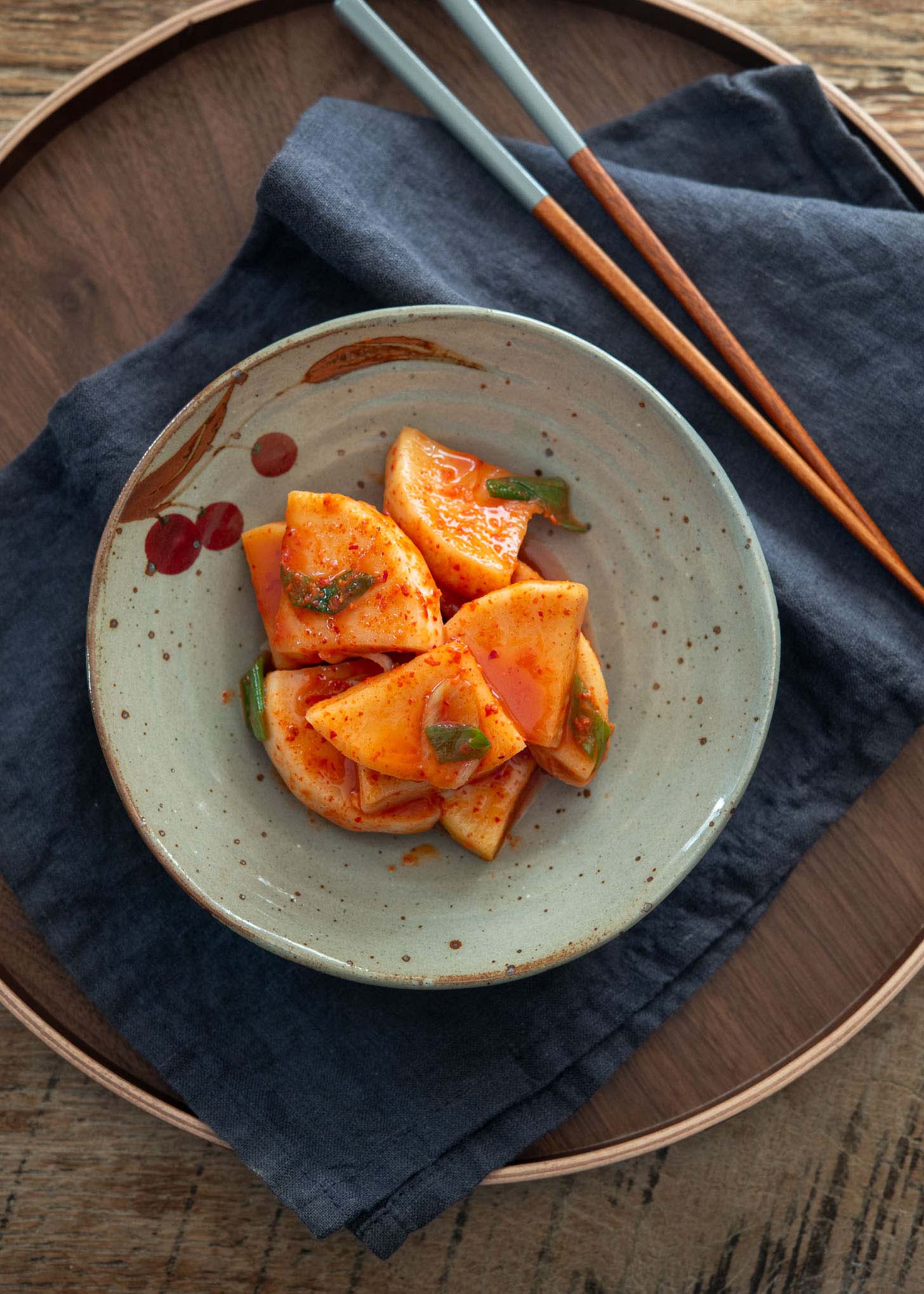

When fall deepens, Koreans begin making a radish kimchi called kkakdugi. I vividly remember my mom making large batches of kkakdugi kimchi every year from October to December to enjoy throughout the colder months.
When it’s fully fermented, this Korean radish kimchi, known as Seokbakji Kkakdugi, tastes even better than the famous napa cabbage kimchi or other varieties of kimchi. Its crunchiness is so tempting, and once you try it, you just can’t get enough!
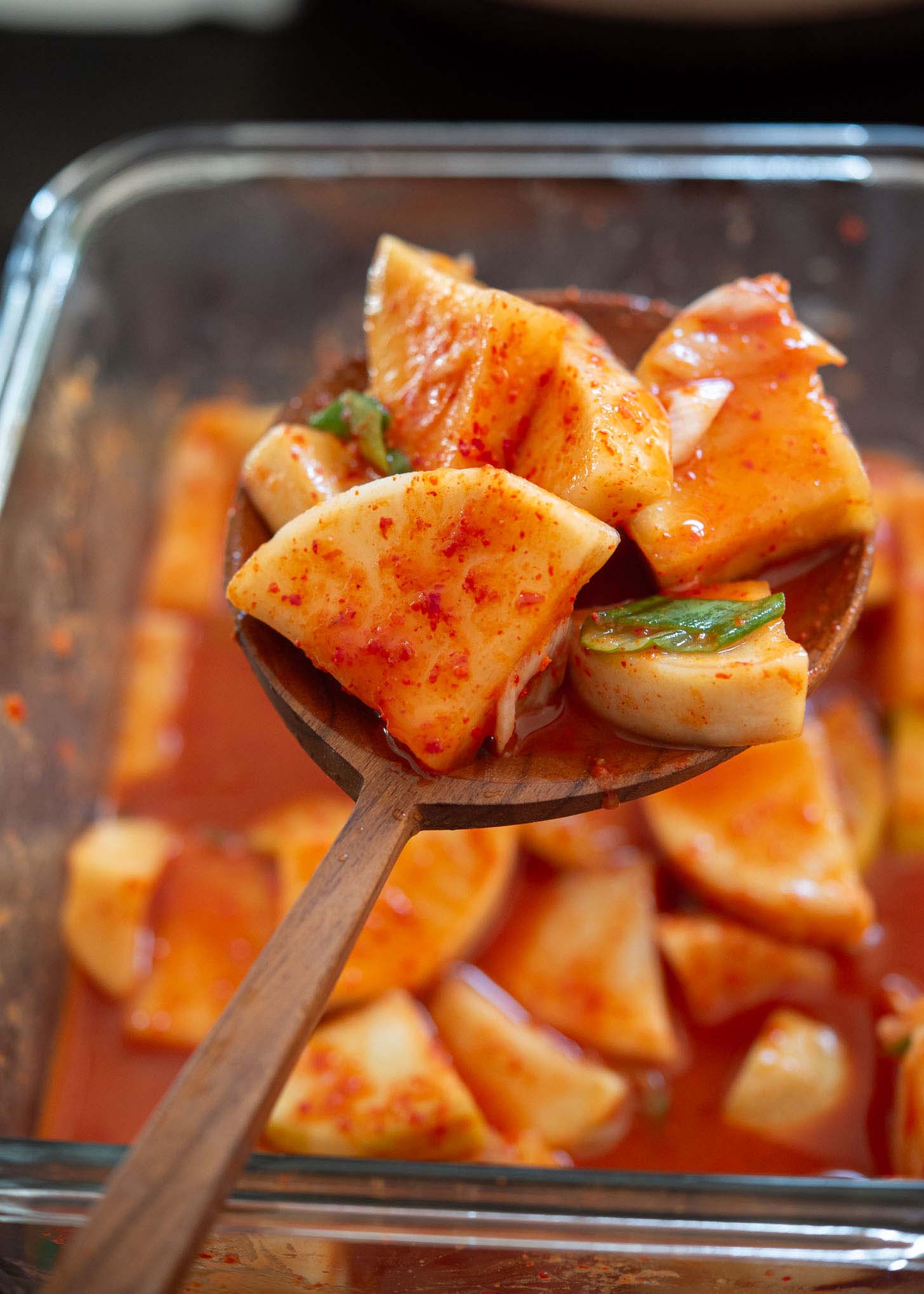

What is Kkakdugi?
Kkakdugi is a type of kimchi made from cubed or sliced radishes. The name “kkakdugi (깍두기)” comes from the Korean word for the cube shapes.
These radish cubes or slices are seasoned with ingredients like chili pepper, garlic, and green onions, giving kkakdugi its signature spicy and tangy taste along with a crunchy texture. Personally, I lean towards sliced kkakdugi over cubed, primarily because that’s what I grew up with in the Southern region of Korea.
In Korean cuisinepeople often enjoy kkakdugi alongside other foods. It goes great with several Korean dishes, including:
Korean Radish
Korean radish, or mu (무), is a white radish variety renowned for its crisp texture and a flavor profile that blends subtle sweetness with a peppery kick. It’s best in cool seasons, becoming sweeter in fall and winter.
It’s perfect for many Korean recipes, including beef radish soup and mackerel radish stew. Summer-harvested counterpart tends to carry a bitter taste.
When Korean radish is unavailable, daikon radish serves as an substitute. While the taste and texture of daikon may slightly differ from the traditional Korean mu, it maintains a decent crispness and taste compatible with various recipes.
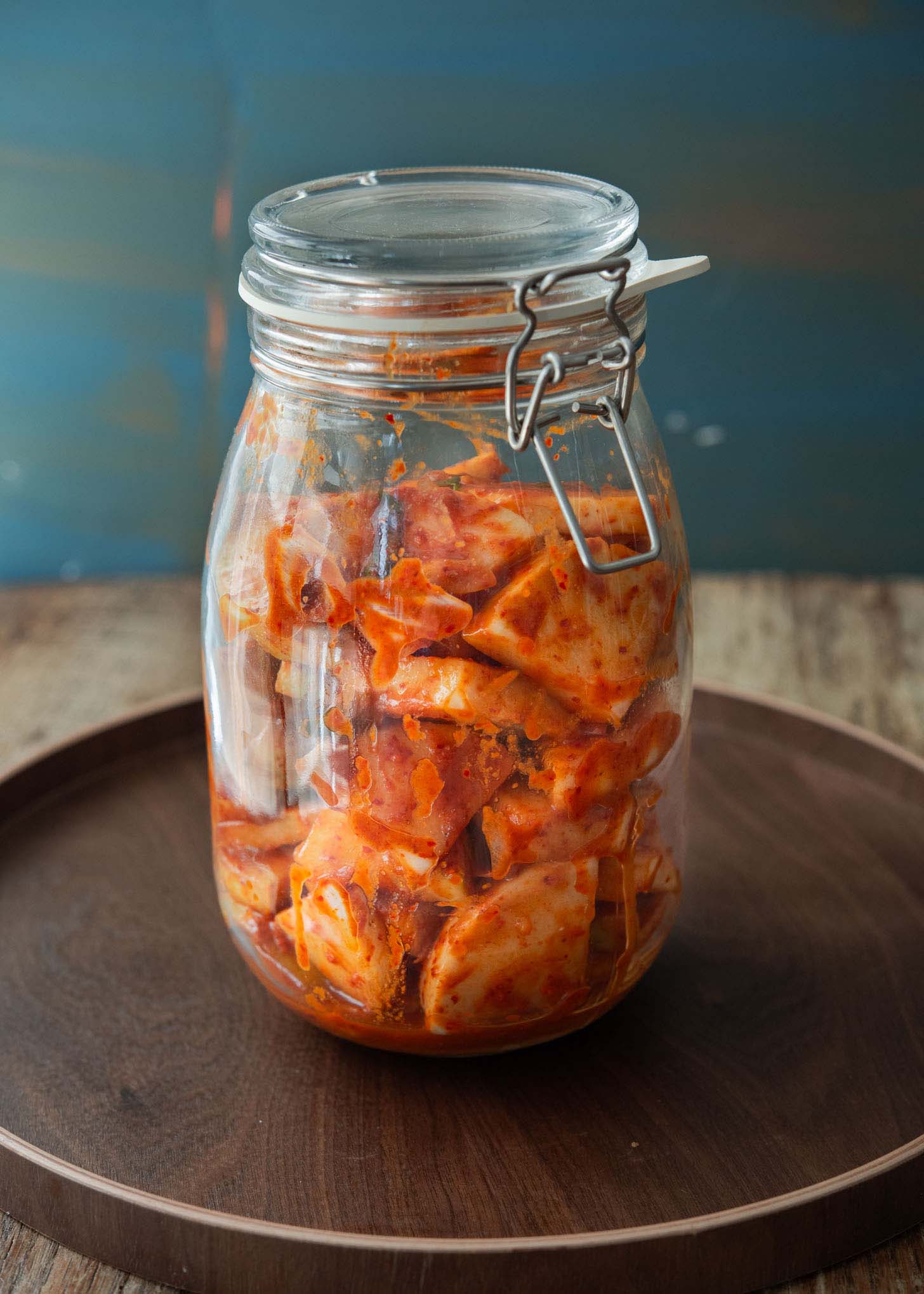

Unique Features of This Radish Kimchi Recipe
This kkakdugi recipe offers a streamlined approach to traditional radish kimchi, achieving the classic taste with less effort. No need soak or make rice flour paste — You can whip up a batch in just 20 minutes.
- No Salting Required: Unlike other recipes that require salting radish to draw out moisture, this simplified method lets you dive straight into mixing with the kimchi seasoning. This approach not only speeds up the kimchi-making process but also lets you quickly prepare a batch.
- As it ferments, the radish naturally releases moisture, resulting in a savory brine that contributes to the kimchi’s distinctive sharp, yet refreshing flavor.
- Incorporation of Carbonated Drink: Utilizing a carbonated drink is a popular trick that Korean restaurants use when making kkakdugi. The soda’s sugar and carbonation speed up the fermentation, while its sweetness offsets the spice, contributing to a richer flavor profile.
- Additionally, the soda enhances the kimchi’s texture, ensuring it remains crisp and vibrant in color.
- Versatility in Shape: While cubed radish is standard for kkakdugi, some prefer slicing it into flat triangles for an old-fashioned look known as Seokbakji Kkakdugi.
- This style is purely preferential, and the recipe accommodates either, allowing you to maintain the traditional cubed appearance if desired.
Ingredients
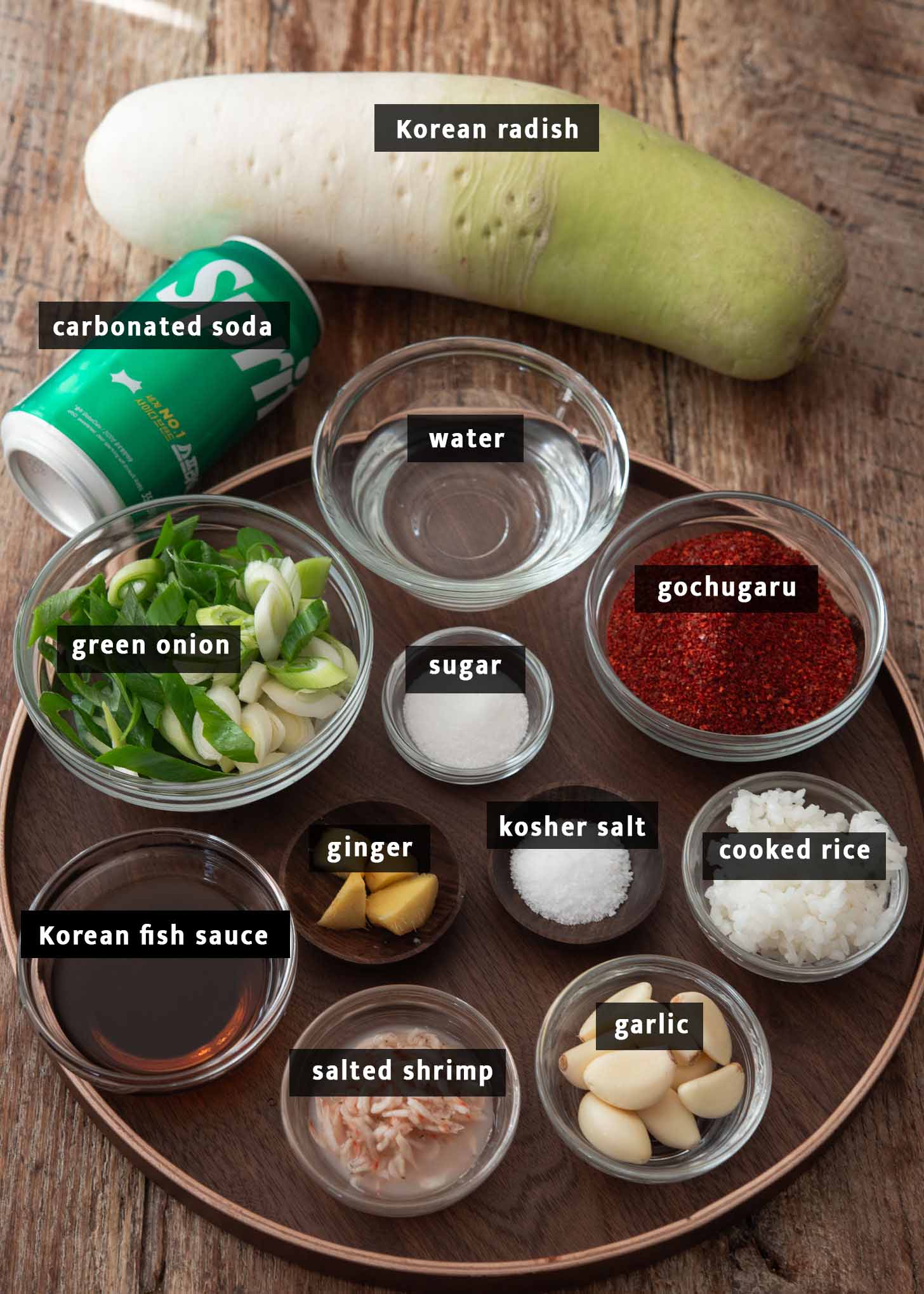

- Korean radish (Mu): When choosing a Korean radish, select one that is firm, has smooth, bright skin, and is medium-sized for optimal flavor and texture.
- If leaves are attached, they should be vibrant green, indicating freshness – great for ponytail radish kimchi.
- Green onion: Adds a mild, zesty flavor and a pop of color to the mix. Asian leek is a good substitute.
Kkakdugi kimchi seasoning:
- Korean red pepper flakes (gochugaru): This gives the kimchi its signature heat and vibrant red color.
- Korean fish sauce (anchovy sauce): Infuses the mix with savory depth and umami richness.
- Salted shrimp: Contributes a briny flavor without a unique seafood tang.
- Garlic, ginger: These are key aromatics, contributing a warm, spicy kick.
- Sugar: Slightly sweetens the mix and helps start the fermentation process.
- Cooked white rice: Acts as a binder for the seasoning and aids in fermentation.
- Salt: for overall seasoning. Use Korean coarse sea salt or kosher salt.
- Carbonated lemon-lime soda: Creates a fizzy brine, quickens fermentation, and adds a subtle sweetness.
How to make radish kimchi (kkakdugi)
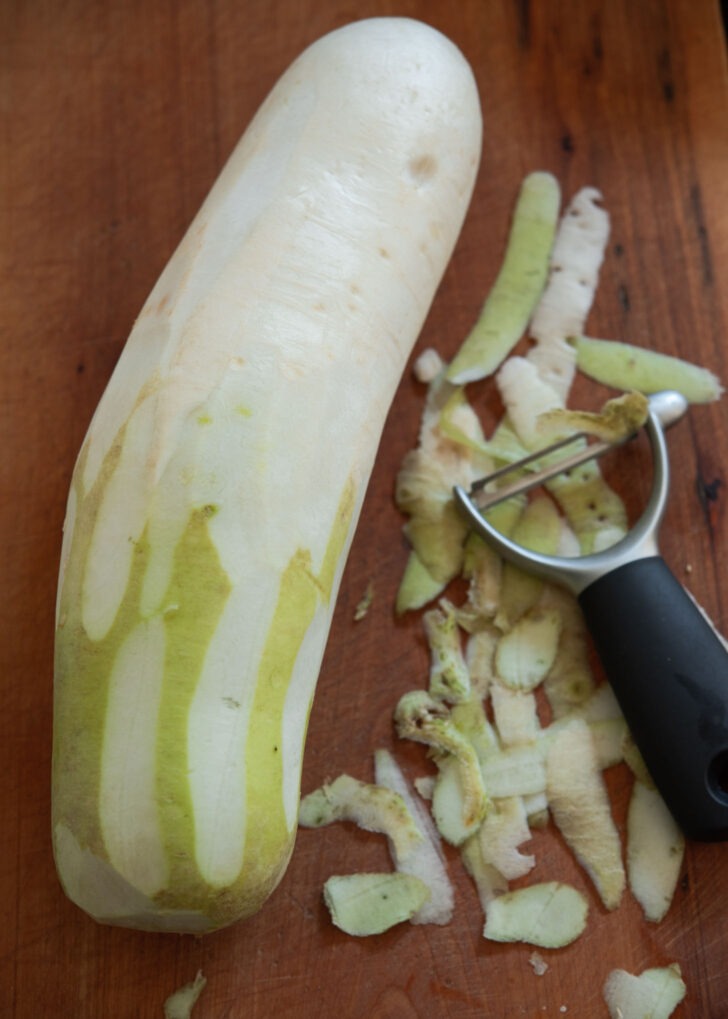

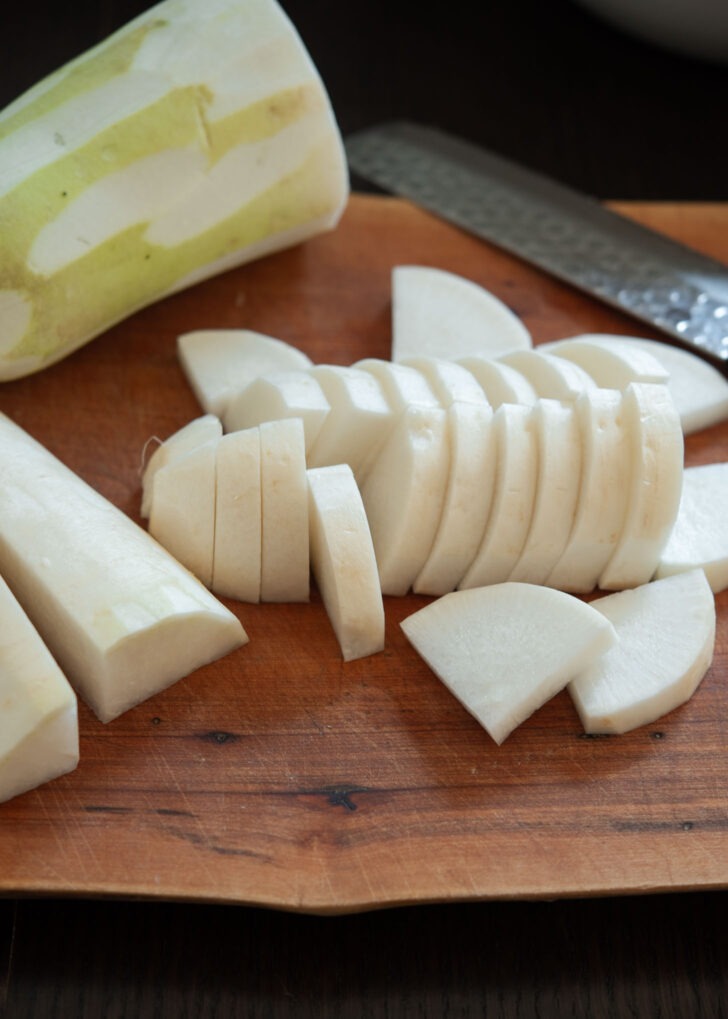

Step 1. Radish Preparation
- For fresh radishes with smooth skin, give a light peel. If the skin is thicker, remove it completely.
- Slice the radish with a knife into 1/2-inch thick disks, then quarter each disk. Transfer the radish pieces to a large mixing bowl and set aside.
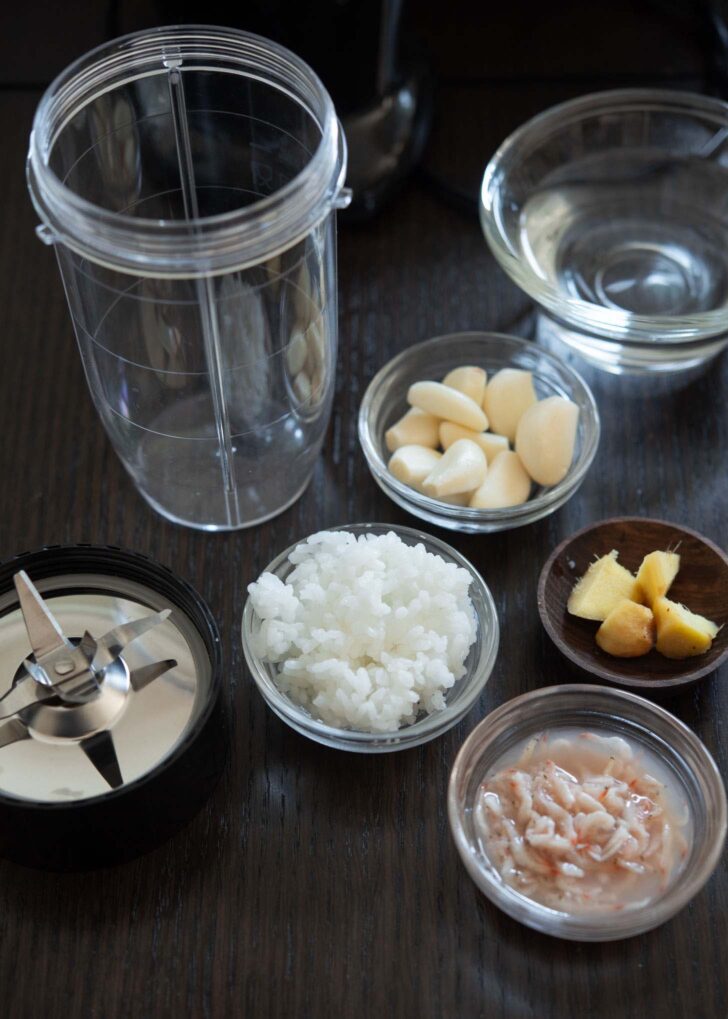

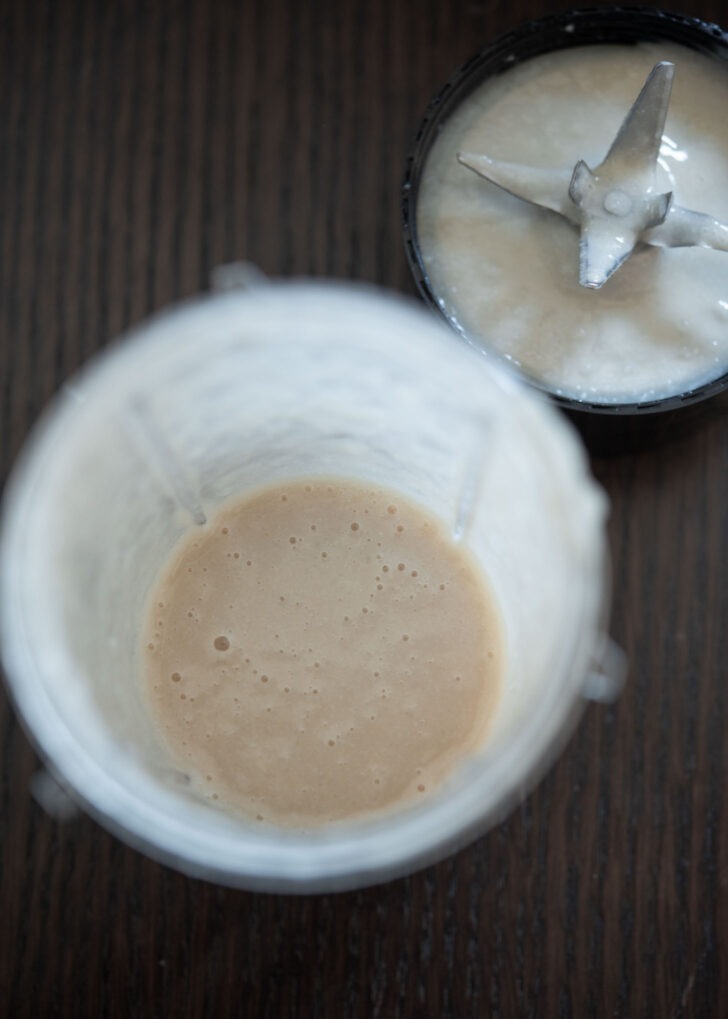

Step 2. Blend the seasoning ingredients
- Combine garlic, ginger, salted shrimp, cooked white rice, and 1/4 cup water in a blender or food processor.
- Process until you achieve a smooth, slightly liquid consistency.
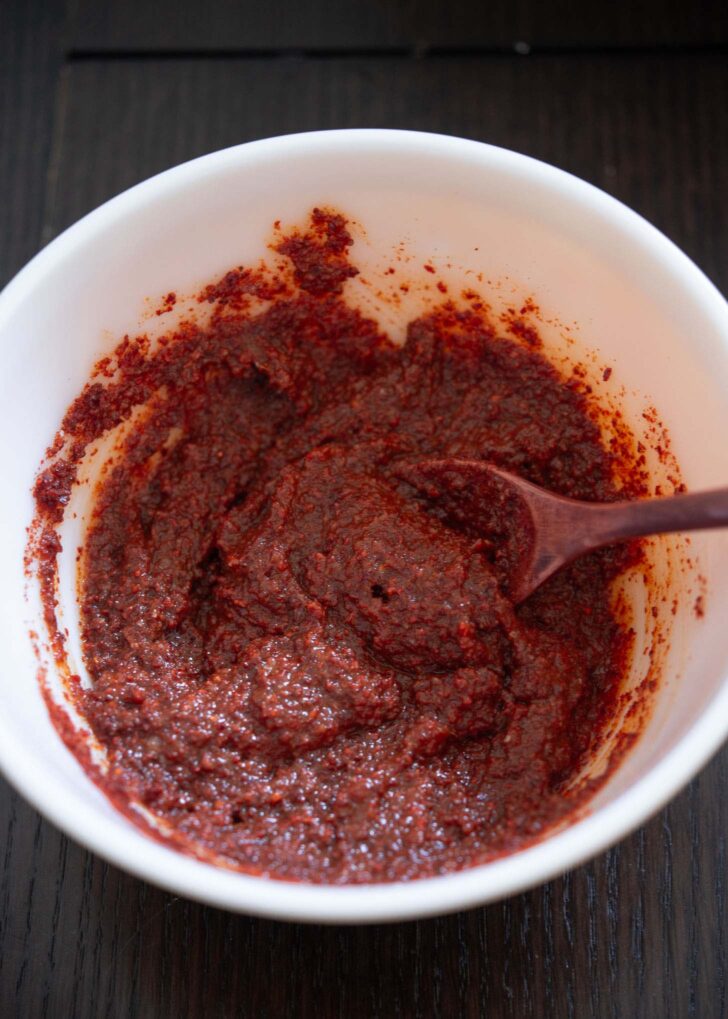

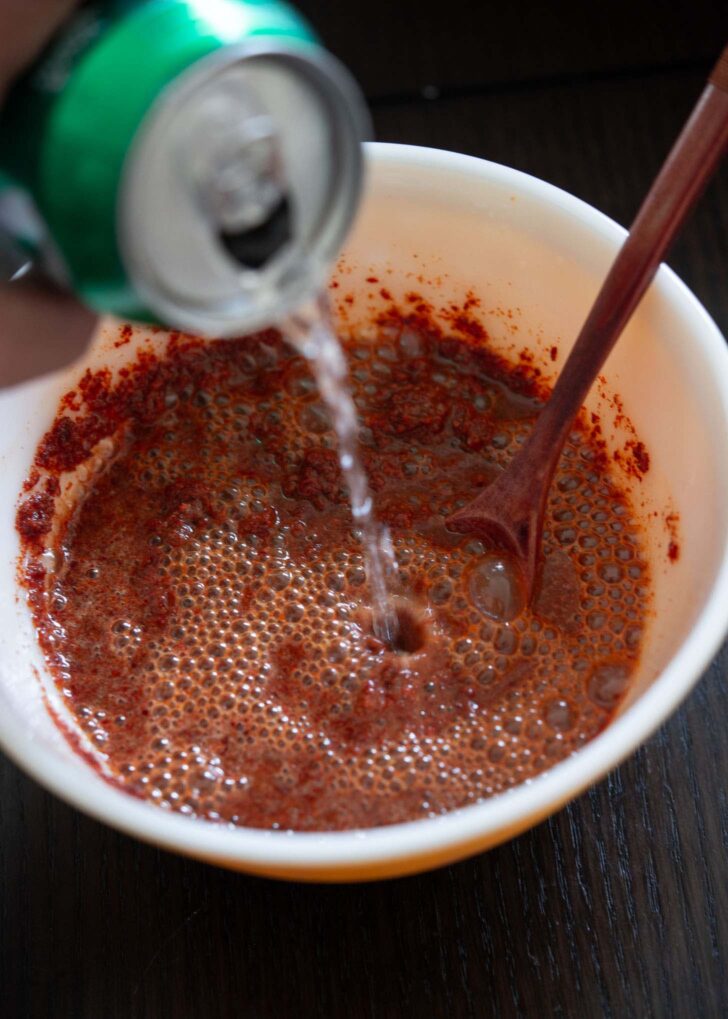

Step 3. Make kimchi seasoning paste
- Move the paste to a mixing bowl. Mix in the Korean chili flakes, sugar, fish sauce, and salt.
- Pour in the carbonated drink and combine thoroughly.
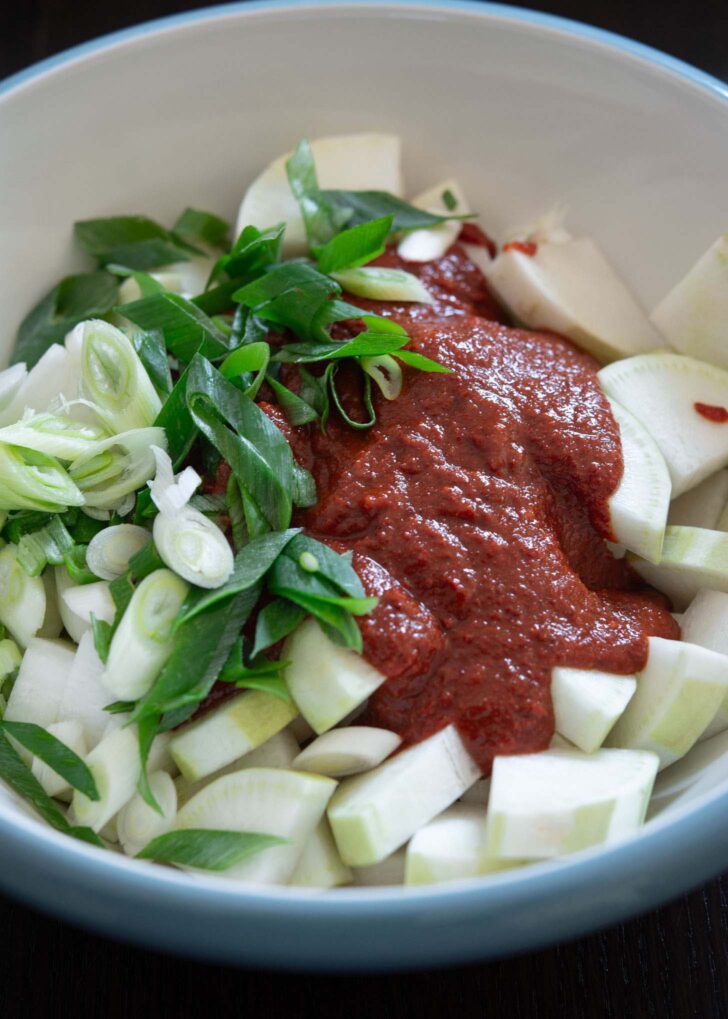

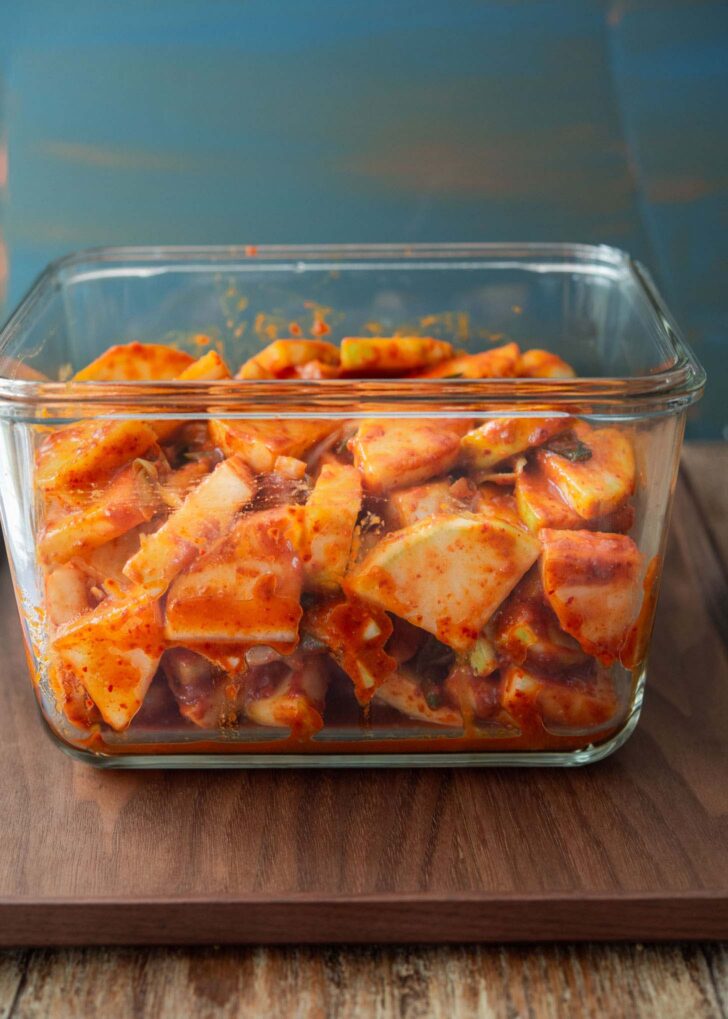

Step 4. Mix radish with seasoning
- Mix green onion with the radish in the bowl. Drizzle the seasoning paste over the mixture, stirring to coat each piece uniformly.
- While the seasoning might appear excessive, it’ll balance out during fermentation.
- Store the radish kimchi in a sealed container or jar.
To ferment
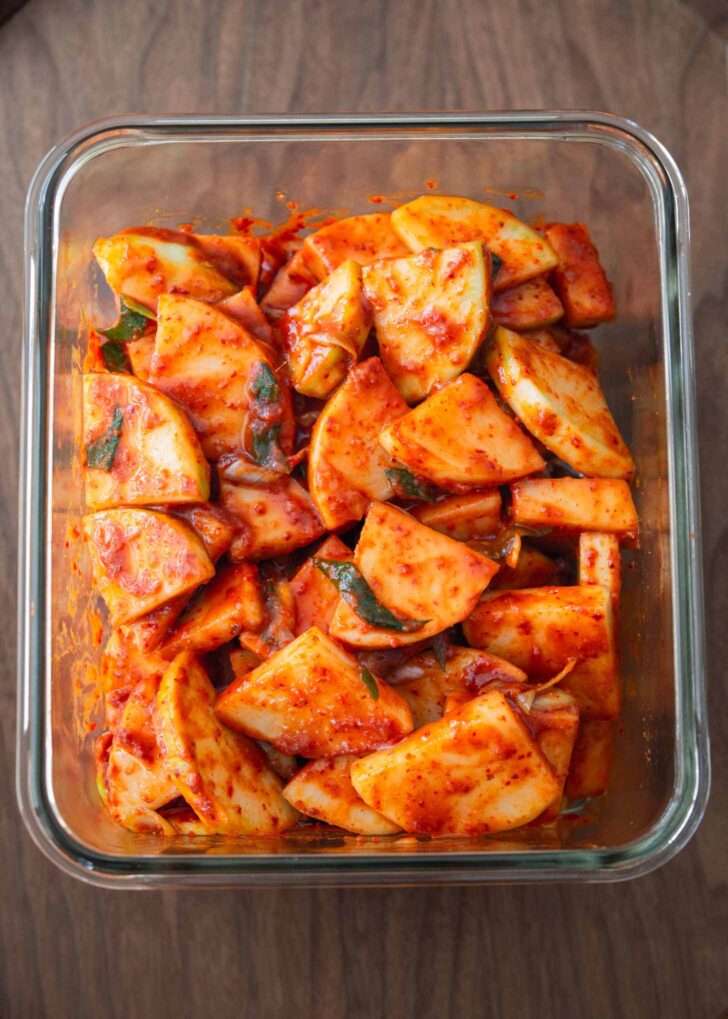

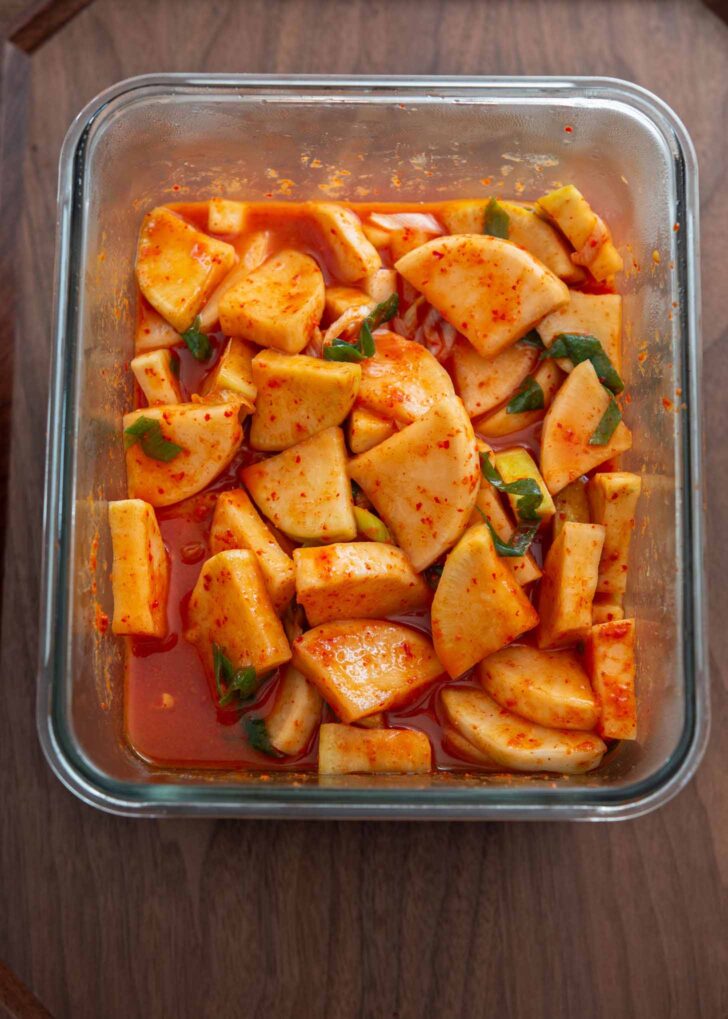

- Let the kimchi rest at room temperature for 2-3 days. You’ll see gas bubbles emerging on top.
- The radish will shed some water, thinning the seasoning as it ferments—this is expected and good!
- After this period, give it a good mix and refrigerate for another 3-5 days.
- By the end, your homemade kimchi should have a vibrant orange-red color with a tangy flavor and a crisp bite.
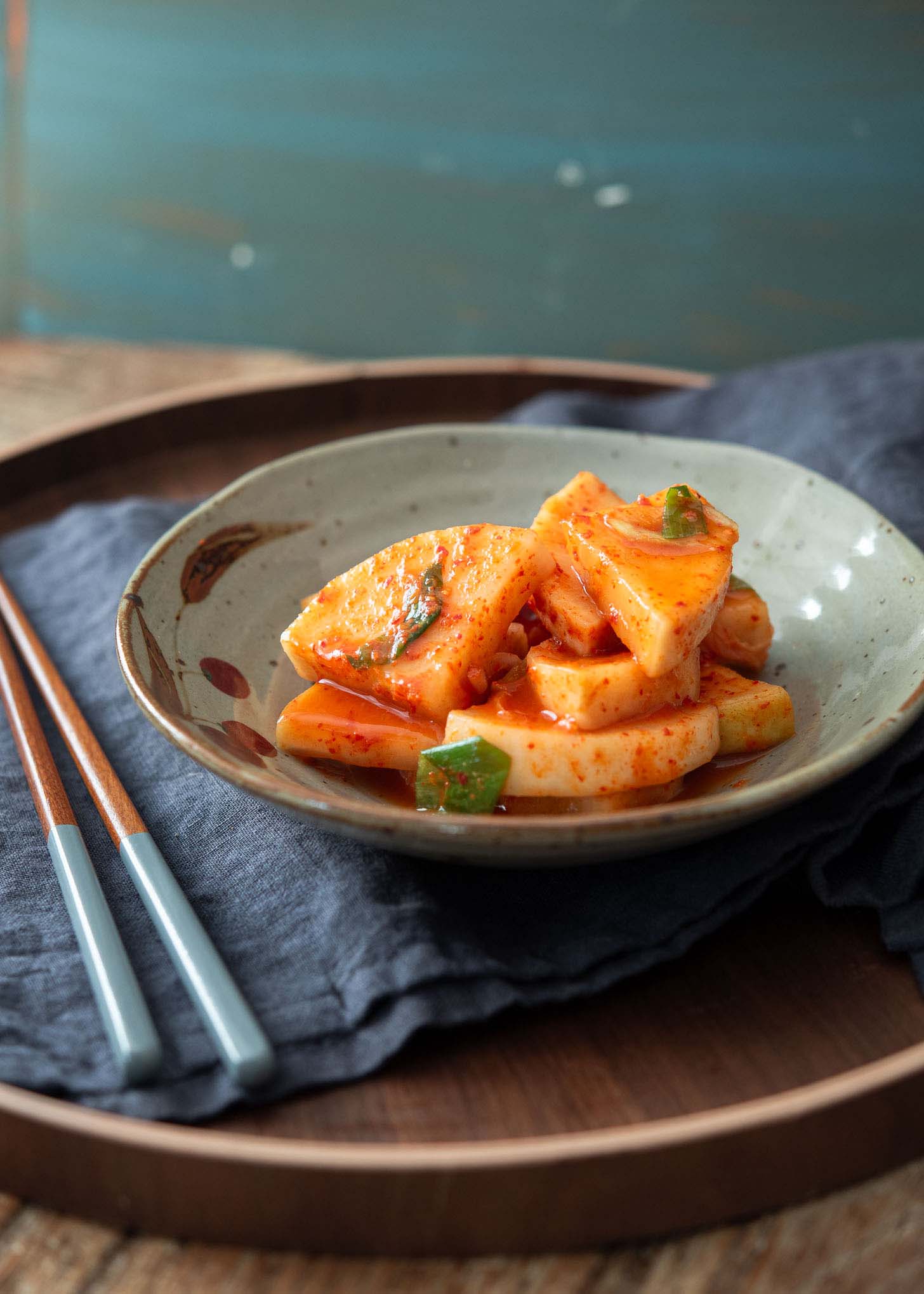

How long does radish kimchi last?
Kkakdugi typically lasts for several weeks if stored properly. When kept in the refrigerator in an airtight container, it can stay fresh for up to two to three months.
However, the flavor and texture will change over time. It will continue to ferment slowly in the refrigerator, becoming more sour and pungent.
Whether kimchi has fermented too long is usually up to personal taste, but it’s safe to eat unless there are signs of spoilage like mold, an unusual smell, or a slimy texture. Always trust your senses when evaluating the freshness of food.
Serving Suggestions
Kkakdugi is the ideal side dish (banchan) for a wide range of Korean meals, complementing everything from rice and noodle dishes to stir-fries, soups, and stews. In addition to the bone-marrow soup and other soups mentioned earlier, consider pairing it with these Korean dishes:
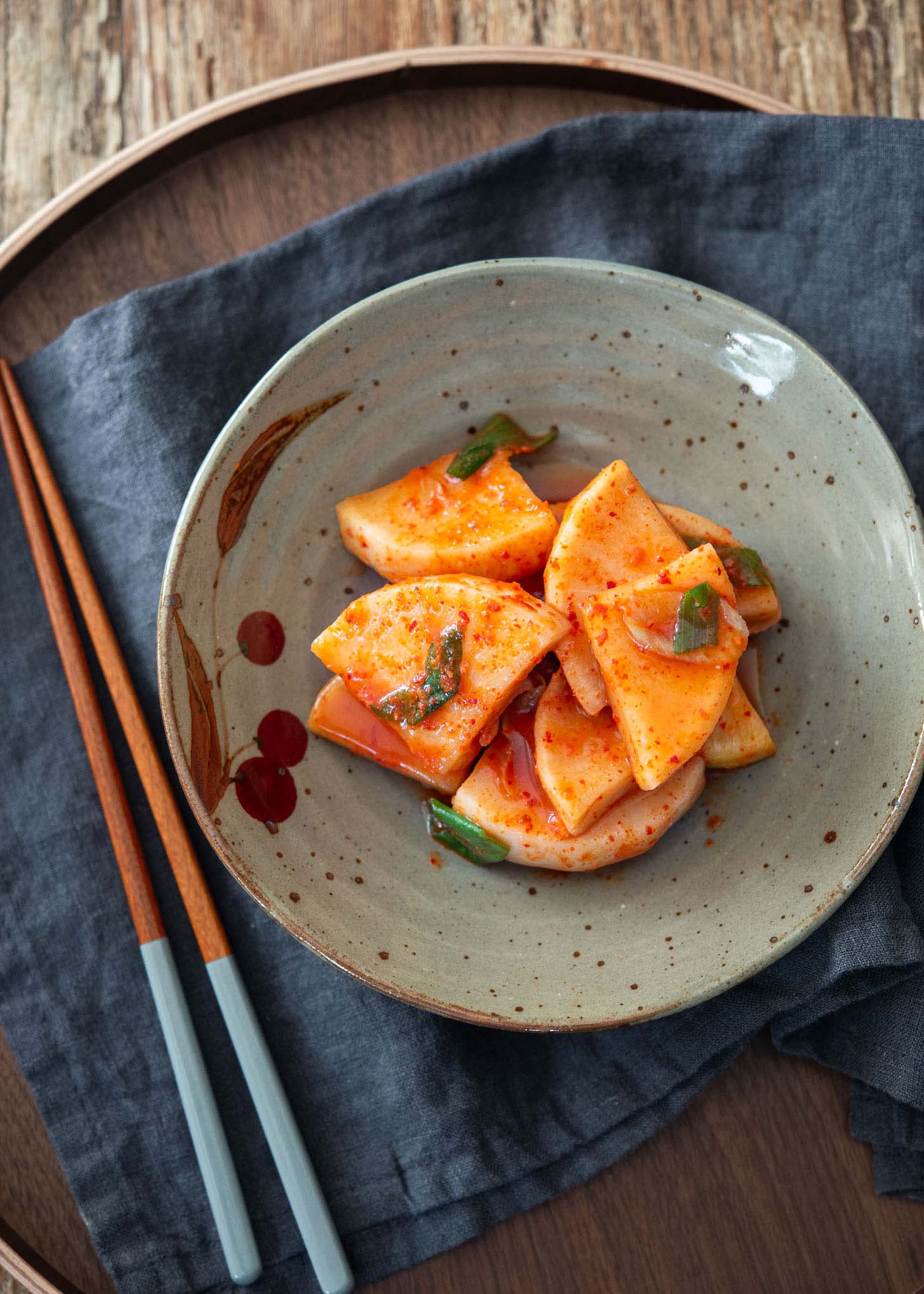

This recipe was originally published on January 16, 2013. Updated and republished for more information and accuracy. Please rate it and share your experience in the comments below! For more delicious recipes, subscribe to our newsletter!
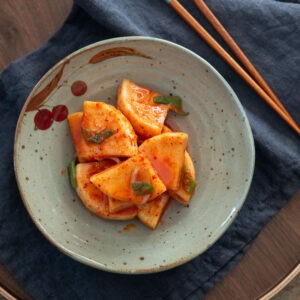

Easy Radish Kimchi (Kkakdugi)
The crisp and crunchy radish kimchi, popularly known as kkakdugi, is a staple in Korean cuisine. With this easy 20-minute kkakdugi recipe, you can effortlessly make authentic-tasting radish kimchi that rivals the flavors of Korean restaurants.
- 2 3/4 lb (1.3 kg) Korean radish, or daikon radish
- 3-4 stalks green onion, chopped
For kkakdugi seasoning paste
- 10 cloves garlic
- 1 inch ginger, peeled and roughly chopped
- 2 tbsp cooked white rice
- 1 1/2 tbsp salted shrimp
- 1/4 cup (60 ml) water
- 6 tbsp Korean chili flakes (gochugaru)
- 1 tbsp sugar
- 3 tbsp Korean anchovy sauce
- 2 tsp kosher salt
- 2/3 cup (160 ml) carbonated soda (lemon-lime flavor)
Prepare the radish
-
If your radish is fresh and the skin is smooth, peel it lightly. For thicker skin, peel it off entirely. Cut the radish into 1/2-inch thick disks and then quarter each disk. (Alternately you can cut into 1-inch cubes) Place the radish pieces in a large mixing bowl and set it aside.
Make kkakdugi seasoning paste
-
In a blender or food processor, combine garlic, ginger, salted shrimp, cooked white rice, and 1/4 cup of water. Blend until the mixture forms a smooth, slightly runny paste. Transfer the paste to a mixing bowl.
-
Stir in Korean chili flakes, sugar, fish sauce, and salt. Add the carbonated drink and mix everything well.
Mix radish with seasoning
-
Add green onion to the bowl with the radish. Pour the seasoning paste over the radish and onion mixture, mixing well to ensure all pieces are evenly coated. The seasoning may seem excessive, but it will distribute more evenly as the radish ferments.
-
Transfer the radish kimchi into an airtight container or glass jar for storage.
To ferment
-
Let the kimchi sit at room temperature for 2-3 days, depending on the room temperature. You’ll notice gas bubbles forming on the surface. As it ferments, the radish will release excess water, diluting the seasoning slightly — this is a positive sign! After 3 days, stir the mixture well and then move it to the refrigerator. Let it continue fermenting for another 3-5 days. By the end of this period, your homemade kimchi should have a bright orange-red hue, a refreshing and slightly sour taste, and retain a crisp, crunchy texture.
Calories: 25kcal, Carbohydrates: 6g, Protein: 1g, Fat: 0.1g, Saturated Fat: 0.04g, Polyunsaturated Fat: 0.1g, Monounsaturated Fat: 0.02g, Sodium: 29mg, Potassium: 315mg, Fiber: 2g, Sugar: 3g, Vitamin C: 30mg, Calcium: 37mg, Iron: 1mg

